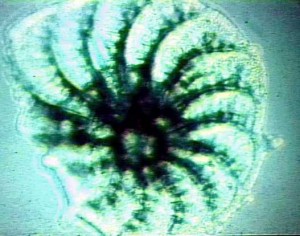Scientists are recycling nutrients in the oceans to make waterproof glue.
Today, animal glues made from bone glue, hide or skin glue, and fish glue are sparsely used for making and restoring objects, paintings, and illuminated parchment manuscripts due to difficulty of storage in a wet state and constant requirement for fresh raw materials.
For 20 years, Sam Bowser, a scientist at the New York State Department of Health’s Wadsworth Center, has been doing research on a single-celled creatures known as Foraminifera. This same creature, Foraminifera, (forams for short) eats other animals that far exceed its physical size. The largest of the species might reach the size of only a fingernail, yet are able to capture and eat creatures many times their own mass. From a global perspective, the drive to understand these creatures is, in part, a result of their role in recycling nutrients in the oceans. Bowser, through his research, found that the adhesive material secreted by Foraminifera helps it build miniscule, but sophisticated, shells out of grains of sand.
The foundation of the adhesive appears to be a protein, which in turn, is heavily coated with sticky carbohydrates. The cells secrete the different components of the glue-like material from distinct organs into a membranous pocket, and then draw the composite into a sticky fiber. Understanding how forams build their shells could lead to the creation of stronger biological adhesives.
The goal of using these adhesives in biomedicine remains elusive, but slow progress is being made in understanding their origins and their importance to the biology of the organisms that created them.
Glues are essential to our future. More and more manufacturing processes are using various forms of glue to replace stitching, stapling, and more expensive forms of fastening. The research of naturally produced glue could lead to the development of stronger biological adhesives that could be a boon in fields as diverse as dentistry, neurological surgery and the development of artificial arms and limbs. Experiments with medical glues suggest that one-third of all wounds may be “stitched” with glues in the next few years.
Glues have proven to be so versatile that scientists are constantly watching for new applications that will make our lives simpler.
For more information please visit:

